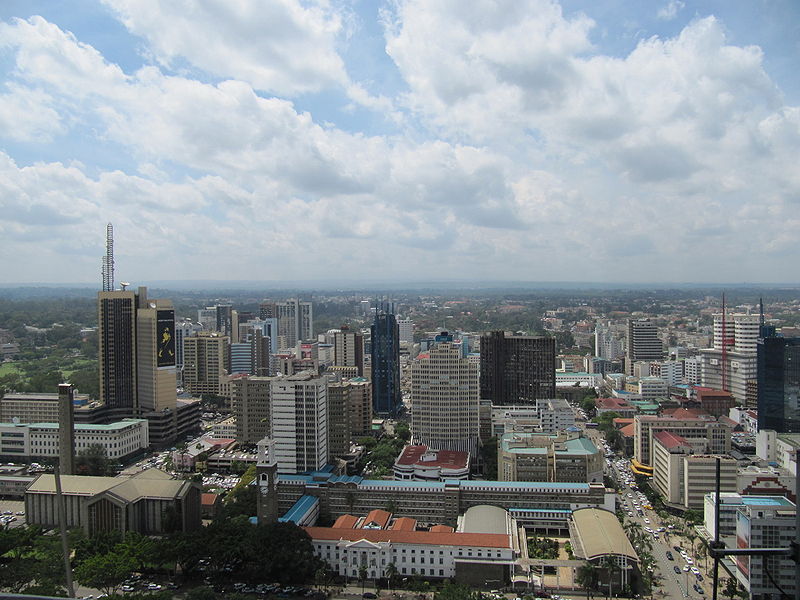Climate governance evolving to make room for new actors
Efforts by governments and the private sector to address climate change challenges through a range of international initiatives are increasingly creating opportunities for greater experimentation, innovation and knowledge sharing—helping to stimulate the action needed to significantly reduce greenhouse gas emissions.

The limitations of the United Nations Framework Convention on Climate Change (UNFCCC) to address the full scope and scale of the climate change challenge has been a catalyst for change, inspiring new alliances, partnerships, forums and networks involving a mix of developed and developing country governments, the private sector and civil society organisations.
This diversification of efforts in parallel with the UNFCCC process provides increased capacity to address the breadth and scale of the climate challenge.
A Diversity of Actions
The number of international activities outside of the formal UNFCCC negotiation process shaping the landscape of climate governance has grown in recent years, creating new opportunities for innovation, experimentation and knowledge sharing, as well as new challenges for the international community in terms of the management and coordination of these actions.
Many of these international initiatives are working to coordinate and promote actions by some of the world’s largest companies and other private sector actors. The World Business Council for Sustainable Development (WBCSD), for example, is in the process of developing an integrated reporting framework intended to increase transparency in the financial and sustainability reporting of its membership. The framework draws on the experiences of companies and organisations across more than 30 countries and 20 major industrial sectors. WBCSD’s cement sustainability initiative has also developed a common carbon dioxide and energy accounting and reporting protocol that is now used by the majority of the industry.
At the municipal level, the C40 Cities Climate Leadership Group brings together 58 megacities (representing 18 per cent of global GDP) to share effective approaches to reducing greenhouse gas emissions and managing climate risks. Under the initiative, the Weekly No Driving Day programme in Seoul (pictured above right) has resulted in a 10 per cent annual reduction in emissions.
Political and policy initiatives to address sector-specific issues arealso gaining traction. For instance, the Friends of Fossil Fuel Subsidy Reform Group, a group of non-G20 countries comprised of Costa Rica, Denmark, Ethiopia, Finland, New Zealand, Norway, Sweden and Switzerland, has been formed with the objective of further championing the political commitment of the G20 and other fora to phase out fossil fuel subsidies.
The Climate and Clean Air Coalition (CCAC) to reduce short-lived climate pollutants is another important multilateral effort. First established in 2012 as a partnership between Bangladesh, Canada, Ghana, Mexico (pictured left), Sweden, the United States and the United Nations Environment Programme, it has grown exponentially to include 34 state and 36 non-state members. A range of sector-specific initiatives and pilot projects have emerged under the coalition, with the aim of capturing the relatively quick climate wins and health co-benefits that can come from addressing short-lived climate pollutants.
IISD has been actively engaged in both the Friends Group and CCAC, seeing value in strengthening the foundations for action outside of the formal negotiating process, while also continuing to work to catalyse efforts under the Convention.
These and numerous other internationally coordinated actions centred on particular sectors, policies or groups of countries can have a critical role in supplementing and strengthening climate change efforts—spurring new action and promoting a scaling up of efforts.
Influence on the UNFCCC Process
The UNFCCC is also evolving—opening up space to engage a broader range of actors and accommodate processes outside of the Convention. Negotiations under the Durban Platform on the content of a post-2020 international agreement explicitly include discussions around the potential role of International Cooperative Initiatives in increasing the ambition of pre-2020 climate action, to accommodate the increasing diversity of actors on climate change.
As well, the UNFCCC’s nationally appropriate mitigation actions (NAMAs) are emerging as a flexible framework for supporting nationally-driven mitigation actions in developing countries, opening up new opportunities for private sector investment and participation.
Similarly, REDD+ (reducing emissions from deforestation and forest degradation in developing countries, and the role of conservation, sustainable management of forests and enhancement of forest carbon stocks in developing countries) has emerged as a mechanism with enough flexibility within its framework to enable national governments to develop programmes and governance arrangements that best reflect their individual capacities and priorities and that are able to engage a diversity of stakeholders.
The UNFCCC also explicitly encourages the active participation of a diversity of stakeholders in adaptation actions through the Nairobi (pictured right) work programme on impacts, vulnerability and adaptation to climate change. Its recently launched private sector initiative focuses on the role of the private sector in reducing vulnerability to the impacts of climate change within their own operations and in vulnerable regions, opening up new prospects for strengthening capacity to manage climate risks.
Challenges
The inclusion of new actors and climate change cooperation mechanisms creates opportunities but also poses some challenges for governance, accountability and transparency. Among these are the need to ensure international consistency and comparability of effort within a patchwork approach to policymaking. Within this context there can be negative consequences, such as reporting fatigue among countries. As well, there is the risk of economic and competitiveness distortions among different jurisdictions similar to the manner in which bilateral and regional trade agreements are creating tensions within the multilateral trading systems and its primary negotiating forum, the World Trade Organization.
For example, the case of the proposed EU-ETS aviation leviesled to increased prices for EU carriers in order to cover the cost of compliance, with spillover impacts on their relative international competitiveness. Efforts to extend coverage to international carriers have been met with significant opposition, to the point that the EU has temporarily suspended international aviation coverage under the ETS in the hopes that a global solution can be reached under the International Civil Aviation Organization.
"For many of the world’s most vulnerable countries, the Convention will continue to be the primary venue through which they will seek action on climate change"
Ensuring the adequacy of ambition in efforts to mitigate climate change is a further challenge. For those pushing for a legally binding Kyoto-style international agreement (most vocally, many least developed countries), enabling an expanded role for initiatives outside of the UNFCCC process through a broader and more flexible governance framework is perceived to create a large risk factor. It is suggested that not centralising actions and processes through the formal UNFCCC process may not generate the level of mitigation efforts understood as being required to avoid the most adverse consequences of climate change.
These concerns are not necessarily unfounded. As many initiatives outside of the Convention are non-binding in nature and rely on voluntary action in particular sectors or policy areas, there is a risk that objectives may settle on the ‘lowest common denominator’ of ambition. If this turns out to be true, then this flurry of new actions will not add up to the significant greenhouse gas reductions science unambiguously states are needed.
With so many different initiatives underway, the need for transparency as well as comparability and a level playing field of actions also poses challenges. Few initiatives outside of the Convention have a strong focus on mandatory measurement, reporting or stringent transparency measures. Consequently, there is a real potential for inconsistent methodologies and reporting systems, which can make it more difficult to estimate aggregated real emission reductions.
Finally, reviewing the various initiatives, networks and markets at play outside of the UNFCCC, it is clear that the majority are focused on mitigation actions in developed countries and major emerging economies. The ability of many developing countries, particularly the least developed countries and small island developing states, to develop and/or participate in such approaches is often limited due to a number of persistent capacity, institutional, technological and scale issues. For these countries, the expansion of action outside of the UNFCCC poses a significant challenge.
For many of the world’s most vulnerable countries, the Convention will continue to be the primary venue through which they will seek action on climate change, even as efforts to find climate solutions outside of this process expands. The ‘one country, one vote’ consensus-based system of the UN negotiations provides a venue in which developing countries can gain support for their unique concerns by getting international attention to focus on their particular needs and interests.
Some combination of ‘top-down’ and ‘bottom-up’ governance is likely to continue to define progress on climate change moving forward. The key to success is ensuring coordination and an effective balance between the common global framework for action that could be achieved under the UNFCCC and the diversity of international initiatives rising up in parallel to this process. The good news is that within this diversity of new and distinct approaches, the single reference point will continue to be how they compare to the UNFCCC; in essence the UNFCCC continues to be global gold standard against which to measure specific initiatives.
However, new governance experiments cannot equate to a weakening of ambition or shrugging of responsibilities. The emerging framework must be both adequately streamlined, stringent and internationally coordinated to drive the type of action the science tells us is required. On the other hand, it also must be sufficiently flexible to reflect and foster the continued growth of the various approaches that some may consider ‘outside’ of the formal negotiating process.
Opportunities
The emergence of a greater number of initiatives outside of the UNFCCC is beneficial in affording opportunities for quick action and more substantive progress by coalitions of interested parties. While the challenges associated with the diversification of international climate fora and initiatives are real and important to consider in policy development, they should not prevent the type of action that we are beginning to see emerge.
Ultimately, whether climate governance takes the form of a coherent quilt or disparate patchwork, the overarching goal should remain the same: ambitious mitigation and adaptation action in support of sustainable development—using all possible means to achieve it.










